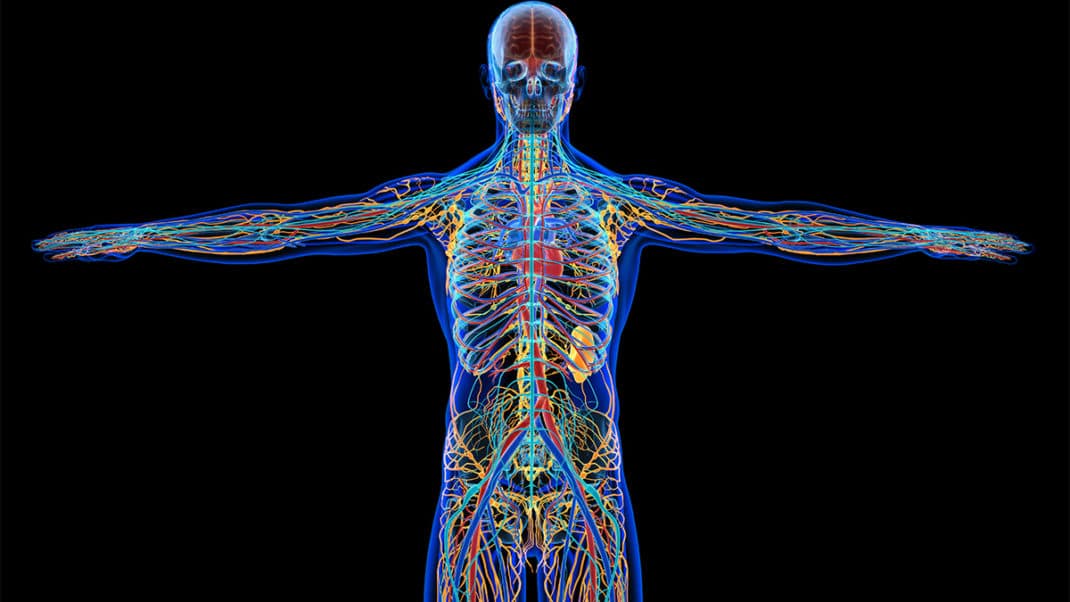Prevention Is the Best Policy for Kids’ Obesity
Avery Faigenbaum, EdD, exhorts fitness pros to provide opportunities for young people to form social networks while gaining confidence in their abilities to be physically active.

Avery Faigenbaum, EdD, is a professor in the department of health and exercise science at The College of New Jersey. With a specialty in pediatric exercise science, he has authored or co-authored more than 150 peer-reviewed publications, 30 book chapters and eight books, including ACE’s Youth Strength Training (Human Kinetics 2009) and Youth Fitness (ACE 2001). Faigenbaum is a fellow of the American College of Sports Medicine and the National Strength and Conditioning Association and serves on the editorial boards of several professional journals. He was elected vice president of NSCA in 2005 and served on the Massachusetts Governor’s Council on Fitness and Sports from 1998 to 2004.
ACE: In your role as an author and a professor, what would you say is the biggest challenge we face in overcoming the childhood obesity epidemic?
Avery Faigenbaum: Contemporary youth are growing up in an environment that many observers call “toxic.” Junk food is sold in schools, food advertising promotes overconsumption, physical education is considered expendable, and some parents fail to realize the physical and psychosocial consequences of childhood obesity. Since lifestyle habits established during the growing years tend to track or carry over into adulthood, pediatric-specific treatment strategies centered on family support are desperately needed to overcome this epidemic. Additional funding for pediatric research and professional training will be necessary to support the development of novel treatment programs as well as the education of qualified professionals to work with youth.
ACE: As an author and a professor, what information do you feel we need to start communicating to aspiring fitness professionals so they can effectively address the obesity epidemic among youth?
AF: Since treatment programs and weight loss interventions for obese adults have resulted in suboptimal outcomes, fitness professionals who work with youth should realize that the best treatment for obesity is prevention. Youth fitness professionals need to develop age-appropriate programs for inactive youth before children become resistant to our interventions. They should also educate children and parents about healthy nutrition and provide anticipatory guidance regarding games, activities and sports that is consistent with individual needs, goals and abilities. Since there are no medications to treat physical inactivity, fitness professionals who understand the fundamental principles of pediatric exercise science and genuinely appreciate the psychosocial uniqueness of younger populations are in an inimitable position to effectively work with healthcare providers to address this condition.
ACE: In your day-to-day life, how do you see the impact of the childhood obesity epidemic in the material you teach, and how do you believe fitness professionals should interact with youth, friends or even people you pass on the street?
AF: Current trends in childhood obesity have a significant impact on my teaching, research and volunteer activities. For example, type 2 diabetes (formerly called adult-onset diabetes) is now being diagnosed in youth—for the most part, youth who are obese. Consequently, future physical education teachers and fitness professionals need to be aware of the challenges associated with managing this condition. Obese youth spend more time alone and tend to be more sensitive to any type of peer interaction. Thus, fitness professionals need to provide an opportunity for [young people] to form social networks while gaining confidence in their abilities to be physically active. As we continue to focus on effective treatment strategies, we should be aware of the influence of peers and parents on a child’s motivation to establish lifelong healthy habits.
ACE: What role do you feel colleges and universities, members of the fitness industry and families themselves play in reversing this epidemic?
AF: The treatment of childhood obesity is complex and therefore the collective actions of individuals, families, teachers, researchers, healthcare providers, government officials, school administrations and insurance companies will be needed to reverse this epidemic. An increasing number of youth already have cardiovascular-disease risk factors, and the long-term effectiveness of treatment strategies for obesity are sobering, as the positive effects of most interventions seem to diminish over time. It is unlikely that one program will prove to be effective in the long run. Rather, culturally sensitive efforts that begin in the home during the growing years and are reinforced and supported in the child’s school and community will likely have the best chance for success. In the future, I believe, a growing number of colleges and universities will offer programs that prepare fitness professionals to address the at-risk child’s eating and activity patterns with the goal of limiting the progression of abnormal weight gain and related adverse health concerns. In turn, we will see an increasing number of school- and community-based programs that target the health-related needs of young children and adolescents.
ACE: How—and in what ways—do you feel corporations and the allied health and fitness industries can actually pool their resources to help reverse that epidemic?
AF: Public health initiatives that link health care with fitness care may offer some hope. For example, healthcare providers could identify asymptomatic youth who do not participate in the recommended amount of physical activity and refer them to qualified fitness professionals who have experience working with younger populations. Since obesity can be considered a chronic disease that will likely require ongoing care, healthcare providers, fitness professionals and insurance companies will need to work together to “detoxify” our environment and foster participation in age-appropriate interventions that promote and support daily physical activity and healthy food choices.
ACE: In what ways do you feel fitness professionals can instill healthy behaviors in children at an early age?
AF: In my view, physical inactivity during the growing years should be treated with the same energy and resolve as hypertension or dyslipidemia in a young patient. Fitness professionals need to instill healthy behaviors in children before they develop bad habits that persist into adulthood. The first step is to recognize the observable influence of free play on growth and development and help youth and their families become more active by identifying barriers (e.g., unsafe neighborhoods) and offering solutions (e.g., community-based recreation programs). Fitness professionals need to raise awareness about the influence of daily physical activity on a child’s physical, emotional, social and cognitive well-being and should get involved in community-wide campaigns that improve access to fitness facilities for all youth.
Editor’s Note: Bridging the Gap is a series of interviews conducted by the American Council on Exercise with professionals throughout the fitness and allied health industries, as well as our partners in the corporate world. ACE hopes this column will start a conversation among those entities about the impact of the obesity epidemic and how we can all work together to eliminate it by 2035.
Avery Faigenbaum, EdD, is a professor in the department of health and exercise science at The College of New Jersey. With a specialty in pediatric exercise science, he has authored or co-authored more than 150 peer-reviewed publications, 30 book chapters and eight books, including ACE’s Youth Strength Training (Human Kinetics 2009) and Youth Fitness (ACE 2001). Faigenbaum is a fellow of the American College of Sports Medicine and the National Strength and Conditioning Association and serves on the editorial boards of several professional journals. He was elected vice president of NSCA in 2005 and served on the Massachusetts Governor’s Council on Fitness and Sports from 1998 to 2004.
ACE: In your role as an author and a professor, what would you say is the biggest challenge we face in overcoming the childhood obesity epidemic?
Avery Faigenbaum: Contemporary youth are growing up in an environment that many observers call “toxic.” Junk food is sold in school





